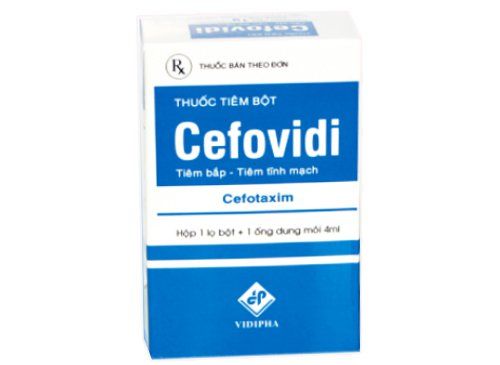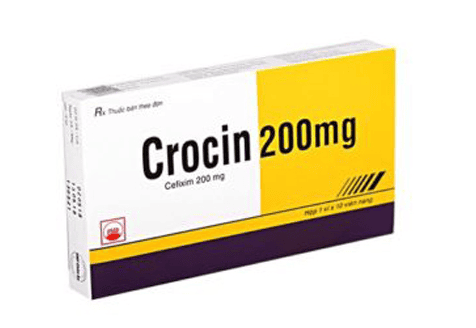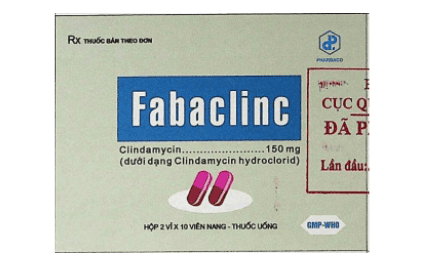This is an automatically translated article.
Clindamark drug belongs to the group of antiparasitic, anti-infective, anti-viral, anti-fungal drugs and is made in capsule form. Clindamycin hydrochloride is indicated for the prevention of endocarditis or bacterial infection caused by surgical transplantation. Let's learn more about what Clindamark is used for through the article below.1. Mechanism of action of the drug Clindamark
Clindamycin belongs to the group of lincosamide antibiotics that bind to the 50S subunit of the ribosome, so it can inhibit bacterial protein synthesis. Moreover, this ingredient also inhibits bacteria at low concentrations and kills bacteria at high concentrations. The mechanism of bacterial resistance to the clindamycin component is due to RNA methylation in the 50S subunit of the bacterial ribosome, and this pattern of resistance is usually plasmid-mediated.
When entering the body, Clindamycin will have a concentration equivalent to 10mg/ml of clindamycin in isopropyl alcohol and water solvents. Plasma concentrations of this compound are very low and less than 0.2% of the administered dose is detected in urine. The absorption of Clindamycin is quite stable with acidic environment. The minimum inhibitory concentration of the drug is 1.6 mcg/ml with about 90% of the total oral dose of Clindamycin being absorbed into the body. Clindamycin is also widely distributed in body fluids and tissues, including bone. However, this distribution did not reach significant concentrations in the CSF. More than 90% of clindamycin is bound to plasma proteins. Clindamycin is metabolized mainly in the liver. Elimination ability of the drug is about 10% when taken into the body. And the mechanism of excretion is carried out in the urine in an active or metabolic form. About 4% is excreted in the feces. The half-life of Clindamycin ranges from 2 to 3 hours.
2. Indications and contraindications to the use of Clindamark
Clindamycin use: The drug Clindamark contains clindamycin is indicated in the prevention of endocarditis or bacterial infection caused by surgical transplant for people allergic to penicillin or those who have been on long-term treatment with penicillin. Or cases of intra-abdominal infections. Or people infected with festering wounds or trauma, bacteremia. Or those with puerperal fever due to genital tract infections, severe infections of the pelvic region, and female genital tract such as endometritis, nongonococcal tubal abscess, pelvic cellulitis, and fasciitis. wound in the vulva after surgery due to anaerobic bacteria. In addition, Clindamark is also contraindicated in cases of hypersensitivity to the drug's components or cases of diarrhea, focal enteritis, ulcerative colitis, colitis caused by antibiotic use.
3. Dosage and how to use Clindamark
The drug Clindamark is used orally. For adults, the recommended dose of Clindamark is 150 to 300mg once every 6 hours, or 450mg every 6 hours if the infection is severe.
For children, a dose of 3 to 6 mg/kg body weight can be applied once and every 6 hours. For children under 1 year of age or weighing less than 10kg, use Clindamark in the form of 37.5mg oral solution once and 8 hours apart.
In the case of use to prevent endocarditis or bacterial infection due to transplant surgery, use Clindamark at a dose of 600mg (corresponding to 10mg/kg body weight for adults) and take 1 to 2 hours before surgery and 300mg (5mg/kg) orally 6 hours after surgery.
In case of puerperal fever due to genital tract infection with fever but no clinical signs, use amoxicillin and clavulanic acid. Fever persists more than 48 hours with a dose of clindamycin 300mg with 1 dose 8 hours apart and used to eliminate fever or use 500mg erythromycin.
Note: The recommended dose of Clindamark is for reference only. Therefore, before using Clindamark, patients need to follow the doctor's instructions.
4. Side effects when using the drug Clindamark
Clindamark can cause some unwanted side effects during treatment. However, with each case, the side effects of Clindamark may vary from mild to severe.
The clindamycin component in the drug Clindamark can cause pseudomembranous colitis due to an excessive increase in the toxin of clostridium difficile. This occurs when the bacteria in the intestines are destroyed by clindamycin especially in elderly patients or patients with impaired kidney function
Some common side effects caused by Clindamark include : Nausea, vomiting, abdominal pain, diarrhea caused by Clostridium difficile bacteria,... These side effects may occur at the beginning of treatment or after increasing the dose of Clindamark. Usually, side effects from Clindamark can be transient or subside over time.
However, in some cases Clindamark can cause serious unwanted side effects with rare reactions. These reactions may appear after just a few minutes of using Clindamark or longer within a few days. In the presence of serious side effects such as: urticaria, anaphylaxis, eosinophilia, reversible neutropenia, pseudomembranous colitis, esophagitis, reversible elevation of liver transaminases, ... then the patient should stop using Clindamark and go to a medical facility for immediate medical assistance.
Some notes during the use of Clindamark include:
For pregnant and lactating women, caution should be exercised when using Clindamark, if possible, this drug should be avoided. Patients should be advised to use Clindamark from their doctor, and carefully analyze the benefits and risks before using the drug. Clindamark may change how it works as well as increase its side effects. Therefore, to avoid drug interactions with Clindamark, patients should provide their doctor with a list of previously used drugs, including prescription and non-prescription drugs, herbs,... When using Clindamark, it should be noted. manifestations of an allergic reaction to the drug. Patients should report their reactions to their doctor so that they can be treated promptly. Clindamark should be used with caution in cases of gastrointestinal disease, especially colitis, and can be discontinued immediately when diarrhea or colitis occurs. In middle-aged and elderly women, diarrhea can be severe. In addition, it should be noted that when using the drug for allergic patients, it is necessary to perform periodic tests of liver, kidney and blood cell function in patients with long-term treatment or in children, Or may recommend Adjust dose and periodically analyze hepatitis enzymes for patients with severe hepatic impairment. Clindamark drug may affect the ability to drive and use machines, so patients should be careful when using it. Above is all information about Clindamark drug, patients need to carefully read the instructions for use, consult a doctor / pharmacist before using. Note, Clindamark is a prescription drug, so patients absolutely cannot buy and treat it at home because they may experience unwanted side effects.













